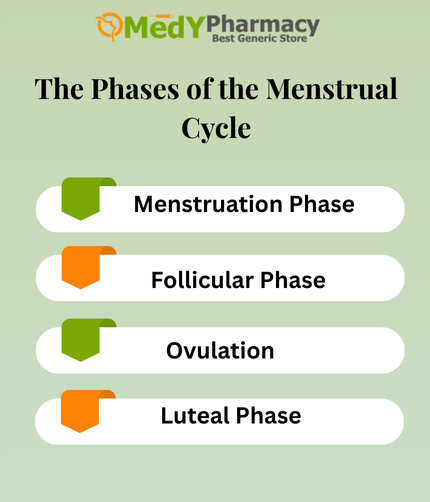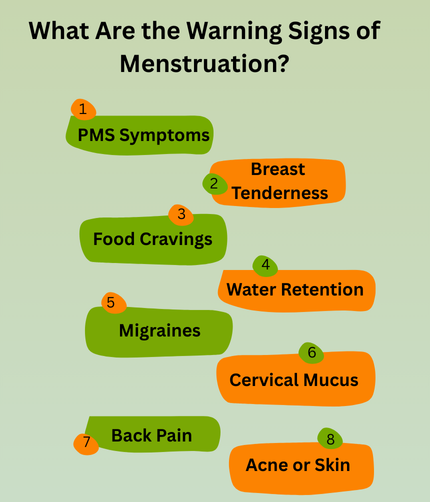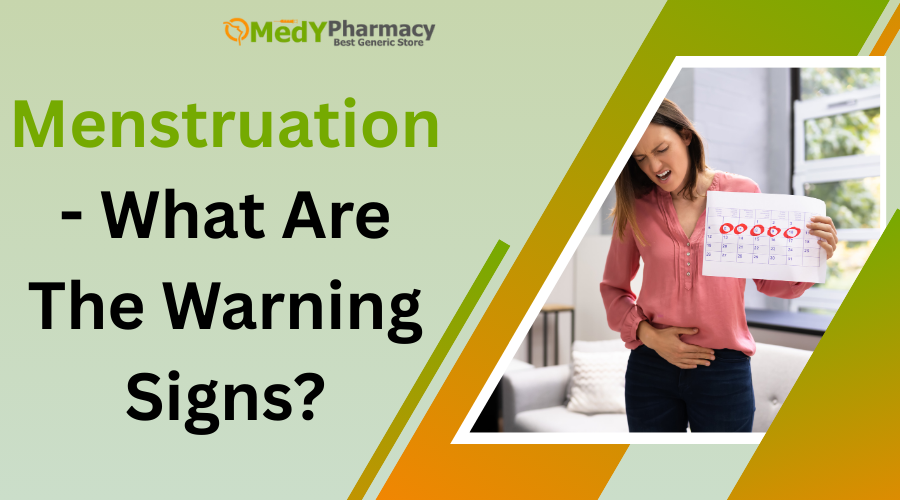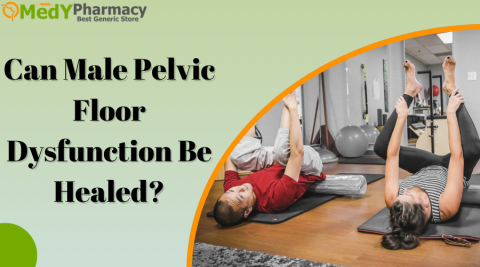Introduction:
This is one of those biologically natural girls that we unconsciously think of as feminine. The majority of medical professionals and scientists consider it to be one of the most fundamental elements of childbirth, which brings new life to the earth.
Every sexually active adult female goes through this process, but only up to a particular age. This procedure, as we will see, signals the conclusion of one ovulation cycle and the beginning of the next.
But if your period is causing you a lot of discomfort and excessive, unusual bleeding,.
Don’t worry if you’re a girl in your early 14s and have begun experiencing menstruation; we’ve included a comprehensive guide in this post that will offer you all the essential details.
The average menstrual cycle lasts 28 days; however, there is significant variation.
What is Menstruation?
In the female reproductive system, menstruation, sometimes referred to as a period, is a normal biological event that usually takes place once a month as part of the menstrual cycle.
It entails the uterine lining being lost through the vagina, which causes tissue and blood to be released. This process typically lasts until menopause, which often happens between the ages of 45 and 55, and starts around puberty, which is around the ages of 9 to 16.
This indicates that the body is operating regularly and that pregnancy is possible with the reproductive system. Although individual differences may exist, the typical duration of a menstrual cycle is around 28 days.
In the absence of fertilisation, hormone levels fall, which causes the lining to break down and be expelled during menstruation. Periods vary in length and severity, but bleeding usually lasts three to seven days.
Due to hormonal fluctuations, people may feel symptoms including headaches, bloating, mood swings, cramps, and exhaustion during their periods.
Even though this is a common occurrence, there are cultural taboos and misconceptions around it, which emphasise the value of education and candid discussions on menstrual health to advance equality, cleanliness, and knowledge.
Hormones that control the cycle, namely progesterone and oestrogen, thicken the lining of the uterus in preparation for a fertilised egg, so preparing the body for a possible pregnancy.
Simply put, this is a biological process that happens each month to women who are sexually active until they reach a specific age.
To give you a very basic concept, it is the process by which the body destroys the unfertilised egg inside the uterus, together with the thick lining that would have developed if the fertilisation was successful.
What Is A Menstrual Cycle?
Every month, this intricate, organic process in the female reproductive system gets the body ready for pregnancy. This recurrent cycle usually lasts around 28 days, yet depending on the person, it can last anywhere from 21 to 35 days.
Follicle-stimulating hormone (FSH), luteinizing hormone (LH), progesterone, and estrogen all play a critical role in regulating the cycle.
Ovulation, the luteal phase, the follicular phase, and the menstrual period are its four primary stages. The cycle starts with menstruation, which causes bleeding that lasts for a few days when the uterus sheds its lining if there is no pregnancy.
What Is A Typical Menstrual Cycle Duration?
The average menstrual cycle lasts around 28 days; however, individual differences may exist. A typical adult cycle lasts between 21 and 35 days, whereas a teen’s cycle lasts between 21 and 45 days.
The first day of menstruation marks the start of the cycle, which concludes the day before the next period. Although the average is 28 days, not everyone has a textbook cycle, and small monthly variances are typical.
Hormonal imbalances, stress, nutrition, exercise, and sickness can all have an impact on cycle duration. The number of days is less significant than consistency; if your cycle is regular, even if it lasts 25 or 32 days, it is often an indication of a healthy reproductive system.
Menstruation Begins When?
Teens often have their first menstrual cycle between the ages of 10 and 15. Although the precise timing cannot be predicted, puberty often occurs within two years following breast growth, with mild vaginal discharge occurring a few months before the onset of menstruation.
In the absence of pregnancy, this starts when the body removes the uterine lining. It occurs when the body receives a signal that it is no longer required to maintain the thicker uterine lining that had been developed to support a possible pregnancy, namely from a decline in hormone levels, particularly those of estrogen and progesterone.
The majority of females have menstruation throughout adolescence, often between the ages of 9 and 16, with 12 or 13 being the average age. We refer to this initial time as menarche. After it starts, menstruation normally lasts for one month until menopause, which usually happens between the ages of 45 and 55.
The Phases of the Menstrual Cycle
Each stage, which is controlled by hormonal shifts, is crucial in getting the body ready for a potential baby.

- Menstruation Phase
The duration of this period might vary from person to person, but it usually lasts three to seven days.
It happens when the egg that was discharged during the previous cycle has not been fertilised, which prevents conception. In response, the body sheds the thicker uterine lining that had developed to support a possible pregnancy because it is no longer necessary.
Some people may feel symptoms including stomach cramps, lower back discomfort, exhaustion, mood changes, headaches, and breast tenderness when these hormone levels drop.
During this period, hormone levels, especially those of oestrogen and progesterone, drastically decline, which causes the endometrium to break down and discharge.
- Follicular Phase
Starting on the first day of menstruation and continuing until ovulation, which usually occurs between days 1 and 13 of a 28-day cycle, the follicular phase is the second stage of the menstrual cycle. This stage is essential for growing and maturing an egg for release, which primes the body for a possible pregnancy.
An immature egg is contained in each of the small sacs called follicles that are produced by the ovaries in response to stimulation from FSH. Usually, the others cease to grow, leaving only one of these follicles to become dominant and continue to grow.
People may have more energy, feel happier, and have cleaner skin during the follicular phase because of the rise in oestrogen. In addition to being crucial for egg development, this stage also sets up the uterine and hormonal milieu for potential conception.
- Ovulation
The third and most important stage of the menstrual cycle is ovulation, which occurs when a mature egg is released from one of the ovaries. It normally happens around day 14 of a typical 28-day cycle, which is about halfway through the cycle; however, it can vary based on the duration of each cycle.
After being released, the egg has 12 to 24 hours to be fertilised. Conception may result from fertilisation if sperm are present in the reproductive canal during this period.
Without fertilisation, the egg will break down and be absorbed by the body, causing the cycle to go into the luteal phase. Understanding when ovulation occurs can help those who are attempting to conceive or prevent getting pregnant, as it is crucial for reproduction.
Some people may experience physical symptoms of ovulation, the most fertile time of the cycle, including a slight increase in body temperature, heightened libido, mild pelvic pain, and changes in cervical mucus, which becomes clear, elastic, and resembles raw egg whites—all of which are perfect for facilitating sperm migration to the egg.
- Luteal Phase
Following ovulation and continuing until the onset of the subsequent period, the luteal phase is the last stage of the menstrual cycle. Following the discharge of the mature egg during ovulation, the ovary’s burst follicle develops into a structure known as the corpus luteum.
However, after around 10–14 days, if the egg is not fertilised, the corpus luteum progressively degrades, causing a precipitous decline in progesterone and estrogen levels. A new menstrual cycle begins with menstruation as a result of the uterine lining disintegrating and shedding due to this hormonal decline.
Menstruation Ends When?
The monthly menstrual period marks the end of menstruation, but in a more comprehensive, lifetime sense, menopause marks the end of menstruation forever. Menstruation in the monthly cycle ends after the uterus has completed shedding its lining, which typically takes 3-7 days, however, individual differences may affect this time frame.
On a larger scale, menstruation ceases permanently with menopause, the natural conclusion of a woman’s reproductive years.
With an average age of 51, menopause usually happens between the ages of 45 and 55. When a woman has not had her period for 12 months in a row, it is diagnosed because it indicates that her ovaries have ceased producing eggs and that her hormone production has drastically diminished.
The perimenopause, which precedes menopause, is a time when hormone levels change and menstrual periods might become irregular, lighter, or heavier before ceasing completely.
This is a normal biological process and a major turning point in a person’s life, frequently marked by emotional and physical changes that differ greatly from person to person.
Why Do Monthly Periods Occur?
Because it happens in periodic cycles, this process is known as periods in females, even though it is classified as menstruation in scientific terms worldwide.
In the following sections, we shall learn the typical duration of the menstrual cycle, but for now, let’s concentrate on its causes.
You see, this requires a fundamental understanding of the female reproductive system. Every month, all healthy, sexually active women experience a series of events known as premenstrual changes.
The body no longer needs the thicker uterine lining that was developed to support a possible fertilized egg if pregnancy does not develop. This is the result of the body discarding endometrial tissue at a time when hormone levels fall. It is made up of uterine lining tissue, mucus, and blood.
Hormonal changes are the primary cause of the menstrual cycle, which normally lasts 28 days and supports reproductive health in several important ways.
The uterus is ready for a possible pregnancy when there is regular menstruation, which means that the ovaries are producing eggs. It serves as a natural gauge of reproductive health and fertility.
Enhance Your Health for a More Consistent Menstruation
A more regular menstrual cycle can be achieved by improving your health, as the hormonal balance that controls the cycle is influenced by several lifestyle variables. Here are some doable actions that encourage regular menstruation:
- Balanced Diet
For vitamins and antioxidants that promote hormonal balance, eat fruits and vegetables.
The building blocks needed to produce hormones are found in lean proteins.
Whole grains, sweet potatoes, quinoa, and other complex carbs help control blood sugar levels, which in turn can influence chemicals that govern the menstrual cycle, such as cortisol and insulin.
- Stay Hydrated
Water consumption is vital for general health and can help avoid the bloating and pain that are frequently linked to menstruation. Your body works better when you stay hydrated, which supports your hormones and metabolism.
- Exercise Regularly
Engaging in physical activity enhances circulation, lowers stress levels, and helps regulate hormones. But moderation is essential, particularly for those with little body fat, significant weight loss, or strenuous activity might interfere with menstruation.
In addition to maintaining hormonal balance, this promotes cardiovascular health.
- Manage Stress
Prolonged stress can disrupt the menstrual cycle by raising cortisol levels, which can inhibit the synthesis of progesterone and estrogen, two reproductive hormones. Period irregularities or missed cycles might result from elevated cortisol levels. Effective stress management may be achieved by the use of relaxation practices, including yoga, mindfulness, deep breathing exercises, meditation, and hobbies.
- Enough Sleep
The control of hormones depends on getting enough sleep. An imbalance in the hormones that regulate the menstrual cycle, including melatonin, estrogen, and progesterone, can result from inadequate sleep. To enhance sleep quality, create a calming evening atmosphere, cut down on screen time before bed, and establish a regular sleep schedule.
- Healthy Weight
Weight loss can have an impact on the menstrual cycle, as does being underweight. While underweight might cause the body to cease ovulating, resulting in missed periods, excess body fat can raise estrogen levels, which may cause irregular or heavy periods.
- Consider Vitamins
Before incorporating any supplements into your regimen, it’s crucial to speak with your healthcare professional. Some vitamins may help maintain the health of your menstrual cycle. Menstrual regularity may be improved by using common supplements such as :
- Vitamin D
- Magnésium
- Omega-3 fatty acids
- Vitex
- Healthcare Provider
Consult a healthcare professional if you suffer from severe menstrual abnormalities, such as painful cycles, excessive bleeding, or skipped periods. Disorders, including endometriosis, thyroid abnormalities, or polycystic ovarian syndrome (PCOS), can cause irregular cycles and may need medical attention.
A more routine can be encouraged by taking a comprehensive strategy that includes stress reduction, regular exercise, appropriate sleep hygiene, and a balanced diet. Menstrual regularity and general well-being will both be supported by maintaining general health.
The Typical Duration of the Ovulation Cycle in Females
The start of the menstrual cycle from the previous month to the next month is commonly referred to as the ovulation cycle. Ovulation cycles for sexually healthy females typically last 24 to 28 days, according to several studies conducted by specialists worldwide.
Your cycle is normal and an indication of healthy hormone levels if it typically falls between these two ranges.
The ovulation cycle for certain women, however, might go up to 38 days, meaning that they may not get a monthly period.
The corpus luteum disintegrates, hormone levels fall, and menstruation starts, signaling the beginning of the subsequent cycle, if the egg is not fertilized.
The viable window, which is the time frame during which sperm can fertilize the egg, normally lasts between five to seven days, although the ovulation process only lasts 24 to 36 hours. This covers the days preceding ovulation as well as the 24 hours following ovulation during which the egg is suitable for fertilization.
Advice on How to Handle Pain and Maintain Hygiene during Menstruation
The muscles in your belly can relax and cramps can be lessened by applying heat. A heated pad, a bottle of hot water, or even a warm cloth can be used. Additionally, some people find that using a heating pad or warm patch on their lower back helps.
Endorphins are natural painkillers that can lessen menstrual discomfort. Gentle activity, such as yoga, stretching, or walking, can assist in releasing these chemicals. Even little activity improves blood flow and reduces cramping.
To ease stress, try giving your lower back or abdomen a little massage. Another method is acupressure, which involves applying pressure to particular body locations to potentially relieve cramps.
Consult a healthcare professional if you have severe or ongoing discomfort or if you have symptoms like nausea, dizziness, or excessive bleeding, since they might indicate an underlying disease, such as fibromyalgia or endometriosis.
Before putting the cup back in, be sure to give it a thorough cleaning and according to the maintenance recommendations to prevent infections.
Period underwear may be a practical and environmentally responsible choice because it is made to absorb menstrual flow. Usually, they are used alone if you have a light flow or in conjunction with other items for further protection.
What Are the Warning Signs of Menstruation?
Many people have a variety of mental and physical symptoms before the onset of menstruation, which act as warning signs or indicators that their period is coming. Although the severity and length of these symptoms might differ from person to person, they usually appear a few days to a week before the onset of menstruation.

- PMS Symptoms
The term PMS describes a collection of mental and physical symptoms that frequently appear in the days preceding menstruation.
This is a moment when some people have more intense emotional reactions.
Even after a full night’s sleep, feeling abnormally exhausted or depleted is a common symptom.
As the body gets ready to shed the uterine lining, mild to severe discomfort in the lower abdomen or pelvis may start days before menstruation. These pains are frequently brought on by uterine contractions and changes in hormone levels.
- Breast Tenderness
The days before menstruation are often accompanied by breast pain or swelling. Hormonal changes, namely elevated estrogen levels, are the cause of this, which can cause the breast tissue to become more sensitive or puffy.
- Food Cravings
Your appetite may also be impacted by changes in hormones. Before their period starts, many people experience an upsurge in cravings for specific foods, like chocolate, salty snacks, and sweets. Changes in the neurotransmitter serotonin, which influences mood and appetite, may be connected to this.
- Water Retention
The days preceding menstruation are often marked by bloating and a sensation of fullness or heaviness in the abdomen. Feelings of swelling and discomfort might result from the body retaining more water due to hormonal changes, especially an increase in progesterone.
- Migraines
The dehydration and fluid retention that frequently accompany PMS might make this worse. It is believed to be brought on by changes in estrogen levels.
- Cervical Mucus
The cervical mucus consistency might vary in the days preceding menstruation. It might get thicker and hazier than the stretchy, transparent mucus that occurs around ovulation. Your menstruation may be on the horizon if this alteration occurs.
- Back Pain
One of the most typical symptoms before menstruation is lower back pain or stiffness. Changes in hormone levels, increased pressure in the lower back, or muscular tension from the upcoming uterine contractions that will follow menstruation might all be the cause of this.
- Acne or Skin
Some people observe that the days before their periods are when their skin breaks out the most. Hormonal changes are to blame for this, especially an increase in androgens (male hormones), which can stimulate the skin’s production of oil, resulting in acne and blocked pores.
Is Having Periods While Pregnant Still Possible?
Pregnancy causes major hormonal changes in a woman’s body that stop her from menstruating. When pregnancy does not occur, the major purpose of menstruation is to shed the uterine lining; however, when a woman is pregnant, the fertilised egg implants in the uterus.
About 6–12 days after conception, when the fertilised egg adheres to the uterine wall, there may be some bleeding or spotting.
Early in pregnancy, mild spotting may be confused with a period due to hormonal fluctuations. This, however, is frequently significantly lighter and does not correspond with the normal menstrual cycle.
Although there could be some minor bleeding or spotting, this is not a period.
Due to hormonal changes in the body, the uterine lining is maintained to support the foetus; therefore, regular periods are typically missed throughout pregnancy.
When Does Menstruation Usually Start?
Puberty, when a young person’s body starts to grow and become capable of reproduction, is often when menstruation begins.
The date of menarche, the first menstrual cycle, can be affected by several factors, including genetics, diet, general health, degree of physical activity, and even emotional well-being. Girls may experience an earlier menstrual cycle if their mums began their periods early.
Occasionally, two to three years before their first period, females may observe the onset of pubic hair or breast development, which are indicators of puberty. As the body adapts to new hormonal patterns, the first few menstrual cycles are frequently erratic, varying in duration and flow. These cycles typically grow more regular over time.
Are Non-Prescription Pills Safe for Delaying Periods or Reducing Pain?
Reducing period discomfort with over-the-counter medications can be safe and effective, but postponing periods is more difficult and typically calls for prescription medicine.
For the most part, they are harmless, but if you have kidney illness, stomach ulcers, liver problems, or are on any other drugs, see your doctor.
One approach to postponing periods using combined oral contraceptive pills (COCPs) is to skip the placebo pills and begin the next pack immediately.
To postpone periods, non-prescription medications are neither safe nor effective; instead, prescription hormones should be used under a doctor’s supervision.
Maybe you won’t be terrified of your menstrual cycle after learning such practical information so quickly and easily.
If you are worried about your menstrual period or have questions, speak with your healthcare professional.
Using a device that applies modest electrical impulses to the skin, Medypharmacy can help reduce pain by preventing pain signals from getting to the brain.
























